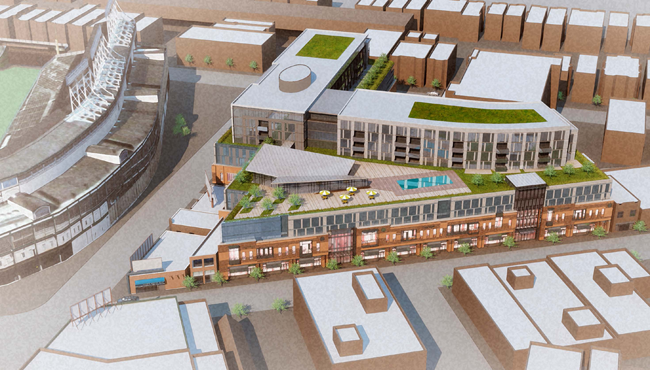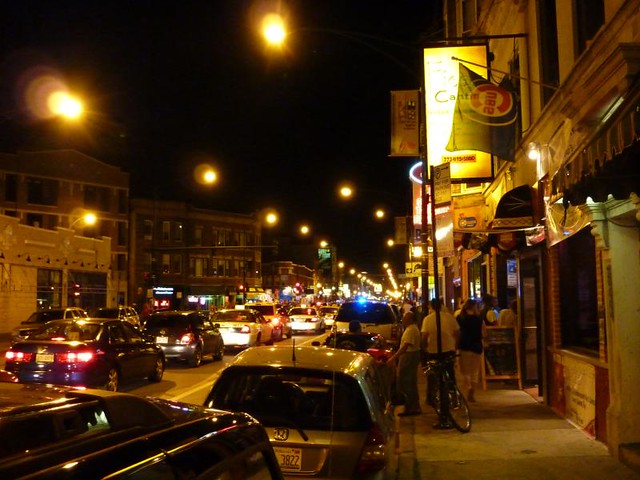A new development threatens to degrade the pedestrian-oriented nature of one of Chicago's most walkable neighborhoods by building excessive car parking at a mixed-use project close to transit. In Wrigleyville, M&R Development is proposing 148 houses, 169,000 square feet of retail space, a health club, and 493 parking spaces at Addison Avenue, Clark Street, and Sheffield Avenue, a short walk from the Addison 'L' station.
This summer, the City Council relaxed parking minimums for exactly this kind of development – a commercial and residential mix near transit – because Mayor Emanuel has set out to reduce driving and congestion in the city while encouraging more walking, biking, and transit use. The new code allows the developer to build zero parking spaces for commercial components and up to 50 percent fewer spaces for residential components. But M&R isn't taking advantage. And while the development is what's known as "planned development" – it will undergo a negotiation between the developer, alderman, and the Department of Housing and Economic Development that can bypass parking rules – the developer is still proposing more than what would be required if it wasn't a PD.
The Wrigleyville developer's PD amendment application specifies that 148 of the 493 parking spaces are the required "accessory" spaces for residents, with the remaining being "non-accessory" spaces. Meanwhile, under the new rules, M&R could build as few as 74 spaces because of the site's proximity to the Red Line.
The marketing materials on the Wrigleyville development's website say that the project will "improve under-utilized land." This is somewhat true, as it replaces surface parking lots with productive and useful buildings, adding housing and retail. If not for the 345 extra car parking spaces, it would actually score quite highly on the Institute for Transportation Development Policy's TOD standard.
But the project quadruples the number of automobile parking spaces on the site. It's unavoidable for a project like this to generate new trips – but with all that additional parking, too many of those trips will be by car, exacerbating traffic congestion, slowing down buses, and making the streets less appealing for biking and walking. Instead the developers should be taking advantage of the new zoning code to reduce parking, adding value to the neighborhood without clogging the streets with more cars.
On the plus side, the Wrigleyville developer proposes widening the eight-foot Clark Street sidewalks by four feet. But as any bro knows, this still isn't enough to keep people out of the roadway at night. The Addison and Sheffield sidewalks will remain as-is.
Allan Mellis, development watcher and director for Wrightwood Neighbors Association, said in a statement to the City Council about this proposal that it will add to traffic congestion alongside the new Cubs hotel and year-round event plaza. He also quoted Peter Bynoe, a former member of the Chicago Plan Commission, as saying, "they are not making any more streets [to handle the additional automobiles]."
Bynoe was right. The streets can't get any bigger or wider, but they can get more efficient. It's time for developers, the aldermen, city officials who will approve this development, and residents, to stop saying, "We aren't Amsterdam. Everyone drives so you need to provide parking." Of course we aren't Amsterdam (who else is?) and a lot of people drive, but the fact is that continuing to build car-oriented infrastructure will ensure Chicago never gets to a point where walking, biking, and transit are the more convenient options for many kinds of trips.
M&R should go back to the drawing board and give the neighborhood something it needs more: wider sidewalks for bike parking and cafés, bus routes that aren't slowed to a crawl by single-occupancy vehicles, and a real contribution to Chicago's future as a transit-oriented city.
The planned development has yet to be approved by the zoning committee.






